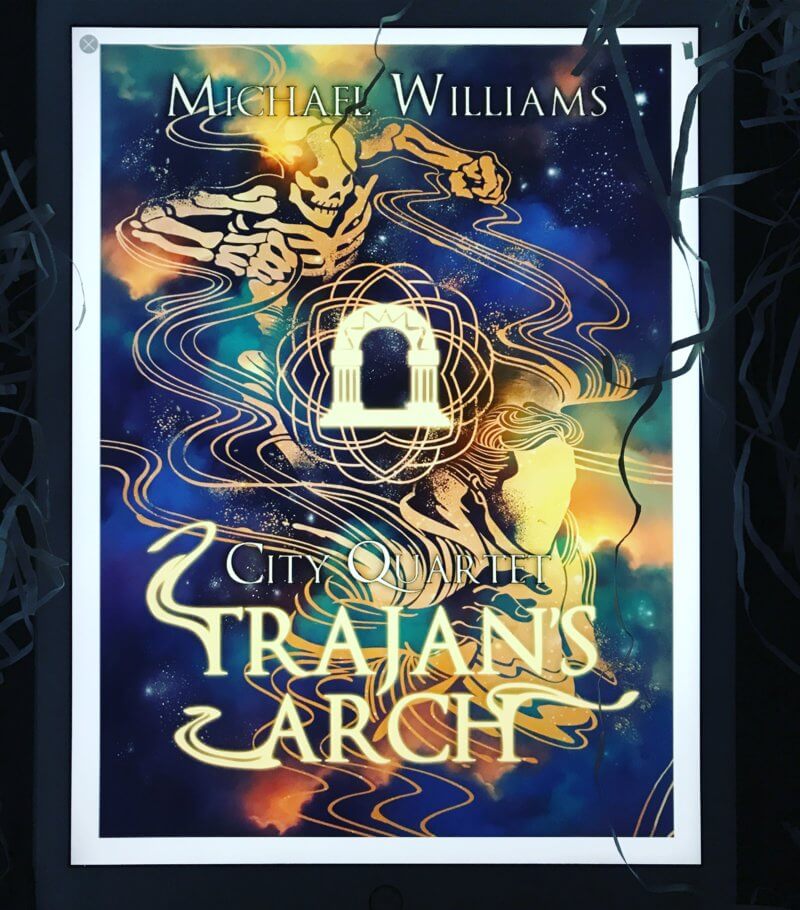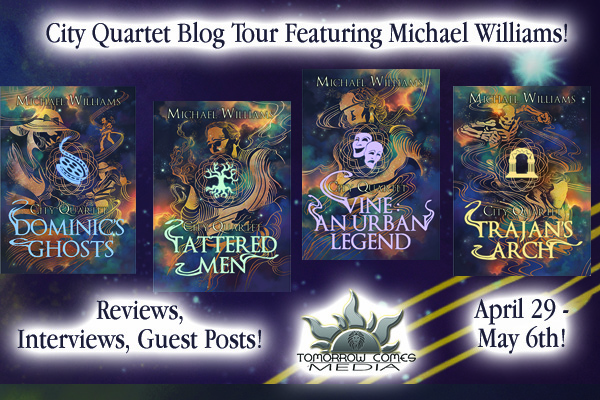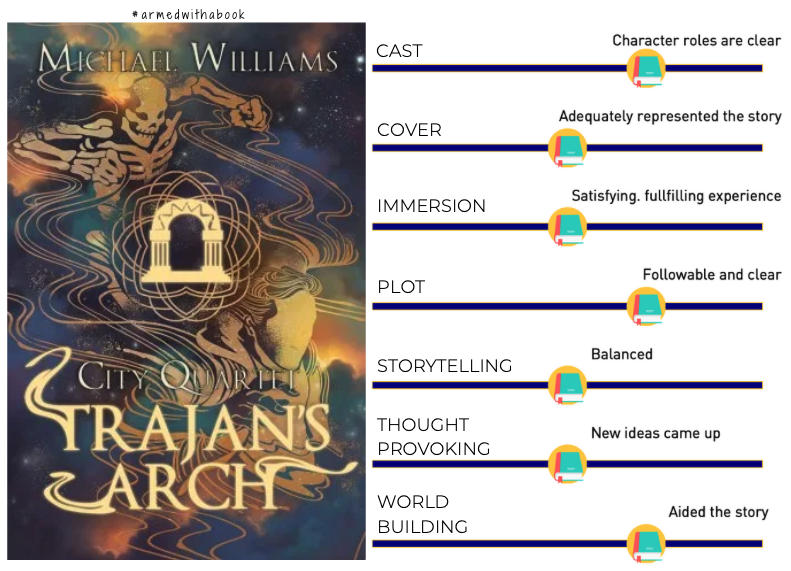Welcome to my stop for the blog tour organized by Tomorrow Comes Media for Michael Williams’ City Quartet books, a visionary group of interrelated novels that can be read as stand-alone tales or as a group, in any order desired. It is a fascinating and atmospheric journey into the heart of mythic fiction and magical realism and I really enjoyed Trajan’s Arch when I read it last year. I asked Michael to tell me about Magical Realism today, something he uses extensively in this series.

The Real and the Other Real
In a wonderful book called Ordinary Enchantments: Magical Realism and the Remystification of Narrative, the scholar Wendy Faris lists five primary characteristics of magical realism:
First, the text contains an “irreducible element” of magic; second, the descriptions in magical realism detail a strong presence of the phenomenal world; third, the reader may experience some unsettling doubts in the effort to reconcile two contradictory understandings of events; fourth, the narrative merges different realms; and, finally, magical realism disturbs received ideas about time, space, and identity.
(Faris, 7)
All of these are in play among the novels I write, and Faris’ description works pretty well for what I call “mythical realism”—a fiction that infuses our everyday world with the qualities you expect to find in myth, folktale, and legend.
My books center on a city that is and is not and might be Louisville, Kentucky, its landmarks and neighborhoods visible to the reader partly in the way that a realist writer would bring them to life. You’ll see streets you could locate on a map, that you could find in snapshots or news articles, but if you follow them long enough and if you look at them carefully, they’ll blur their direction or sprout side streets like a double-exposed photograph: it’s then that “the narrative merges different realms,” and you can see the magic behind the everyday—how even the most ordinary of things have a kind of glow and suggestion of the extraordinary and the magical. There is promise in the here and now, in our lived experience, and one of the best things that magical realism can do is to return us to our present lives, more prepared to pay attention and to look for the wonder that is already there.
So for magical realism. Mythical realism does other important things.
We often feel as though we are dropped into stories. While remembering things, we sense patterns, pressures, plot lines that take us from one place and situation to another. At the time we are passing along that road, our choices seem improvised, patched together from what seems immediately possible, but on looking back, we see the design of things—whether it was always there, or whether memory and imagination cobble together a meaning from events. And when we recognize the pattern and meaning as something ancient, time-honored, and almost universal, I think we begin to consider why myths matter and why, perhaps, we find those common patterns in our lives.
The trick in writing magical realist (and mythical realist) fiction rises out of one leap of understanding: the writer has to know that the magic is real—as real as scientific and empirical evidence—and so is the myth. We live our lives in currents of unobserved magic, magic that is nonetheless shaping how we understand the world emotionally and spiritually. And we live the patterns of myth because those patterns came from somewhere, came from lives observed, and may be as much a part of our inheritance as instinct or eye color…or the desire and yearning to look at the world around us and find those patterns. When you know this as a writer, the magic and myth become plausible to you, and by contagion or osmosis, this knowledge finds its way into the reader’s understanding and acceptance.

Here is the synopsis and my reading experience for Trajan’s Arch. Check out my review by clicking on graphic below and the interview I did with Michael last year too!
Gabriel Rackett stands at the threshold of middle age. He lives north of Chicago and teaches at a small community college. He has written one novel and has no prospects of writing another, his powers stagnated by drink and loss. Into his possession comes a manuscript, written by a childhood friend and neighbor, which ignites his memory and takes him back to his mysterious mentor and the ghosts that haunted his own coming of age. Now, at the ebb of his resources, Gabriel returns to his old haunts through a series of fantastic stories spilling dangerously off the page–tales that will preoccupy and pursue him back to their dark and secret sources.
Want to start with Trajan’s Arc? Find it on Amazon (print) and digital.
Be sure to check the other blogs on the tour. See schedule here.

Cover image: Writing desk Photo by Clark Young on Unsplash


Incredibly beautiful cover designs!